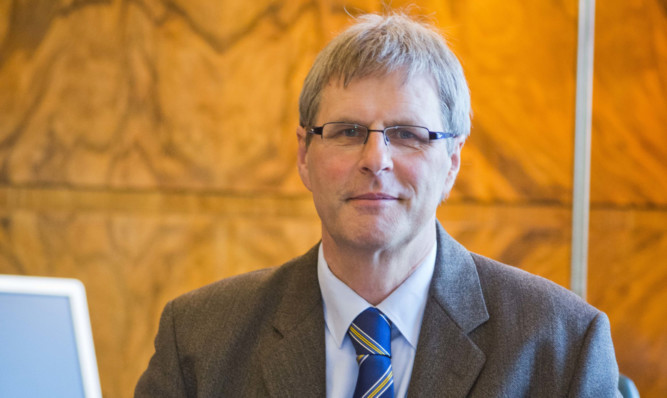Did Sir Peter Housden, Scotland’s most senior civil servant, use his legendary blog to inform staff of his decision to stand down? The top mandarin, who last week announced his planned departure, quickly made a name for himself when he became the Scottish Government’s permanent secretary five years ago.
It was not so much the fact that he kept a blog, but the banality of its contents that so bemused colleagues. His weekly updates to 5,500 civil servants included mind-numbing details of his yoga classes, his house move and his hobbies.
Criticised by opposition politicians for lacking gravitas, his musings made him something of a laughing stock, the “David Brent of Scotland’s civil service”.
In one fairly typical entry he wrote: “I did get some time to have a mooch up and down George Street and get into Harvey Nicks, ostensibly in search of a raincoat. I came home with a jumper and a shirt, but that’s shopping isn’t it?”
But cringeworthy though the blog was, it is not how Sir Peter will be best remembered. His lasting legacy will be discrediting his profession’s reputation for impartiality.
Furthering the political aims of his ministers without being seen to endorse them was the fundamental duty that Sir Peter failed to honour. Within barely a year of his appointment he was accused of going native and by the referendum he was widely regarded as a cheerleader for independence.
Back in September 2011, the leaders of Scottish Labour, the Lib Dems and Conservatives made a formal complaint to his then boss in London, Sir Gus O’Donnell, that he had become a “craven follower of Alex Salmond”.
In briefings that were leaked to the press, Sir Peter urged government officials to “embark on a journey towards constitutional reform”, and he dismissed coalition plans to devolve limited tax powers as being “lost in the mists of time”.
That row reached the House of Lords but it was up to Sir Gus, as Cabinet secretary, to discipline St Andrew’s House. He gave Sir Peter too much rope and he duly hanged himself with it.
Instead of using his office to improve Scotland’s NHS and schools, he seemed hell-bent on carrying out the Nationalists’ bid to break up Britain.
His un-finest hour came with the publication and promotion of the White Paper on independence, a £1.3 million doorstop that was a barely disguised SNP manifesto. He was brought before a Commons committee to defend what he called his “objective” and “informative” analysis of separation, which he had put together with Salmond’s henchmen, otherwise known as his special advisers.
But the tone of the document saying, for example, that Britain’s Trident nuclear deterrent was “an affront to basic decency with its indiscriminate and inhumane destructive power” turned it into a propaganda exercise and made a mockery of Sir Peter’s claims to be non-partisan.
It was also revealed that he kept no minutes of a meeting with the SNP government to discuss the White Paper, a record which could perhaps have reassured sceptics about his neutrality.
Part of Sir Peter’s problem was his lack of experience he came late to the civil service and quite recently admitted he had not read key memoranda setting out civil servants’ code of conduct. Possibly, he blurred the lines because they were not clear to him in the first place.
But his over-enthusiasm for his master’s vision could have been reined in by successive superiors in London and it wasn’t. The upshot was that his status was diminished and no one, outside the Salmond bubble, really trusted him.
With his exit soon after Salmond’s the head of the UK civil service has the opportunity to wipe the slate clean and spell out to Sir Peter’s replacement the boundaries of the role.
Scotland’s next Sir Humphrey must be amenable to all political parties, while fulfilling his responsibilities to the executive, and should be beyond persuasion and above the political fray.
Britain prides itself on the integrity of its civil service; it is the centrepiece, as one former Scottish secretary put it, of our constitution. When the door closes on Sir Peter, hopefully it will close too on a sorry chapter in civil service history.
